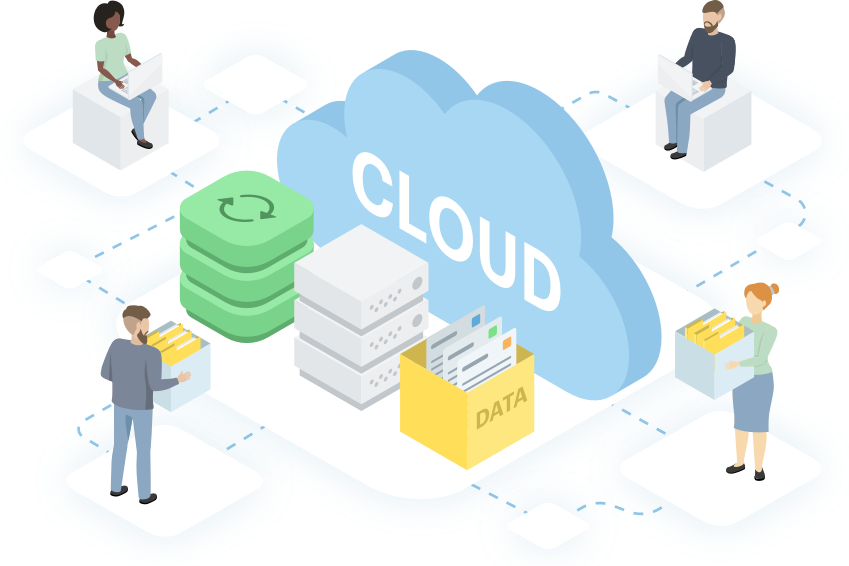The terms cloud and cloud computing are thrown around a lot, but what do they really mean? In this article, we give a clear explanation of the different terms.
The term "cloud" is a shortened form of "cloud computing".

In a nutshell: The term cloud refers to the interaction of multiple servers. The servers take on tasks such as data storage or complex programme sequences. The cloud user does not know how many servers are running behind the cloud.
Even if one server fails, the entire system is not affected. This independence from individual servers is called cloud because the user does not need to have an overview of the individual units (cloudy/unclear for the user). The cloud is the big picture of these computing units.
So cloud does not mean that your data is transmitted exclusively via "clouds" or satellites. It all happens on the ground, using your "normal" internet connection via radio towers, routers, cables and data centres.
Important Basics
A lot of blogs are about services that provide storage in the cloud. But this is only one use case. You can also run your own software in the cloud. The different models: Infrastructure-as-a-Service, Platform-as-a-Service and Software-as-a-Service are explained in more detail in the Cloud A-Z below.
Cloud services give access to much larger amounts of storage. You can use your data in the cloud from anywhere in the world. You can run more complex software than ever before. And you can connect your devices more effectively.
Of course, all this comes with risks. With the right credentials, others can also access the cloud, whether it is intelligence services, other government agencies or companies with immense market power. For this reason, we have included offers on this page that promise a secure cloud.
Another drawback of the cloud should not be forgotten: without the internet, there is no cloud. Even though we can access the internet from more and more places these days, you should always remember that your data is stored on a different storage device, which you can often only access via the internet.